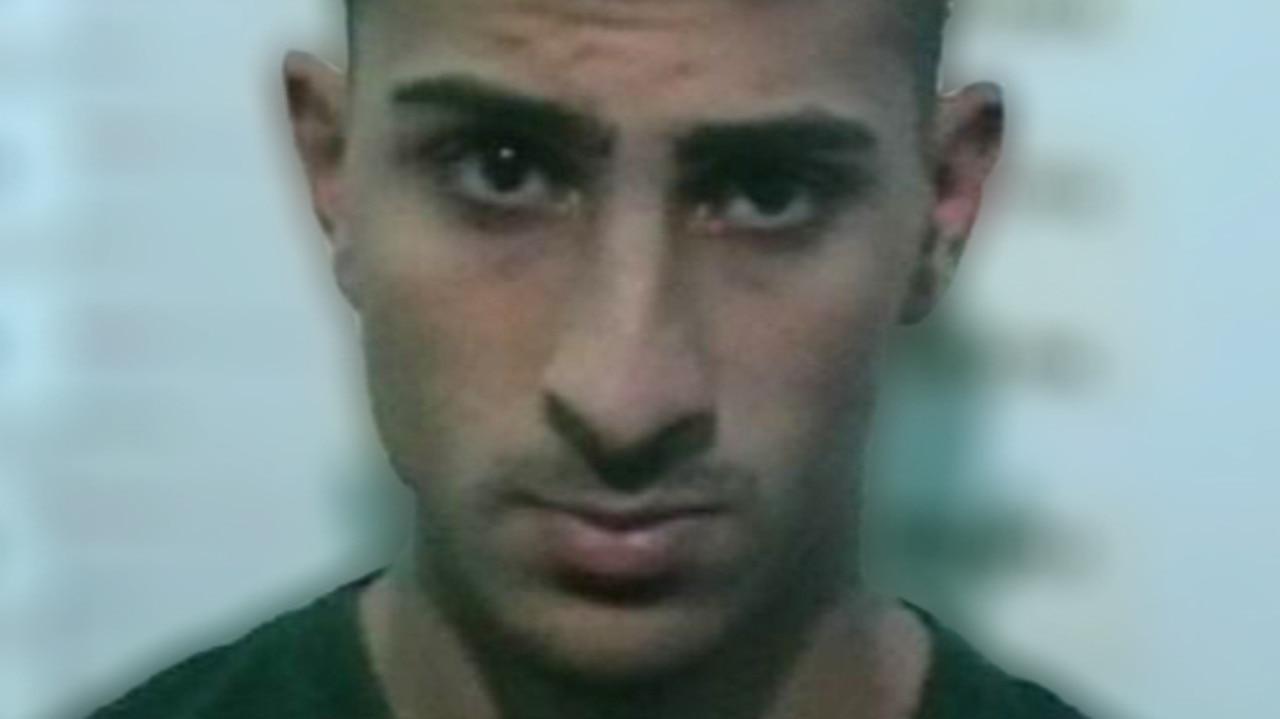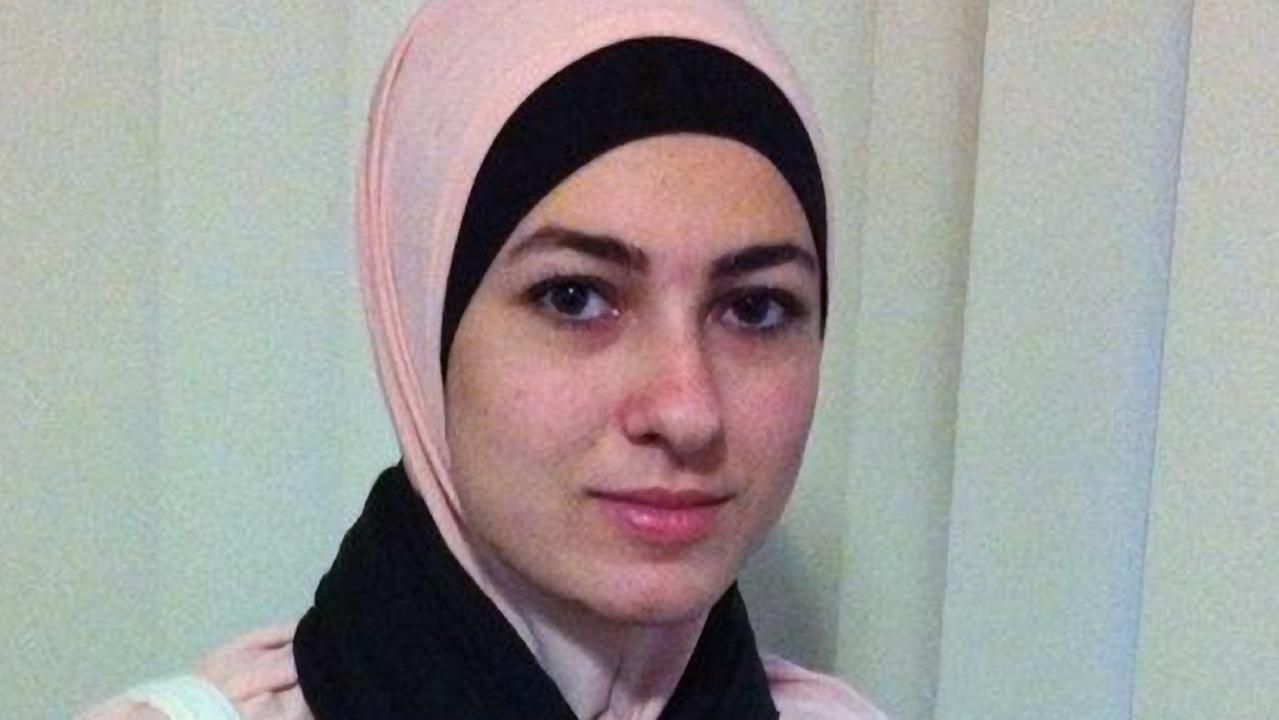Bourke St terror attack: day of unlikely heroes as the people fight back
The man who died on Bourke Street yesterday wasn’t being heroic. He wasn’t trying to foil a terror plot. But he may well have.
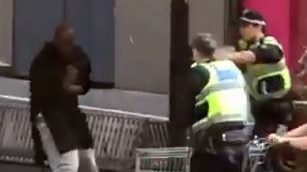
A man died on Bourke Street yesterday, stabbed by someone he didn’t know, someone he perhaps thought was in trouble when he saw his ute on fire.
He wasn’t being heroic. He wasn’t trying to foil a terror plot. He may well have.
When police piece together what happened, they may discover that this man’s fatal intervention prevented a far deadlier attack.
Alex Dickinson was on his way to the hairdresser when he saw it unfold. He saw a tall, dark-skinned man emerge from the vehicle, kitchen knife in his hand.
Before Dickinson knew what was happening, the driver from the ute plunged the blade into the bystander’s chest. He took a couple of steps then collapsed.
The last voice he heard was the reassuring words of a stranger lying next to him, rubbing his back, telling him he’d be OK.
He died where he fell. But before he did, he drew a terrorist out from behind the wheel of a flaming ute loaded with gas bottles; a potential bomb on wheels heading towards the Bourke Street mall. Once the attacker was on foot, armed with a knife, it fell to other, ordinary people to do what they could. One grabbed a shopping trolley. Another a chair. They fought him with whatever they could, fought him side-by-side with uniformed police, until an officer shot him dead.
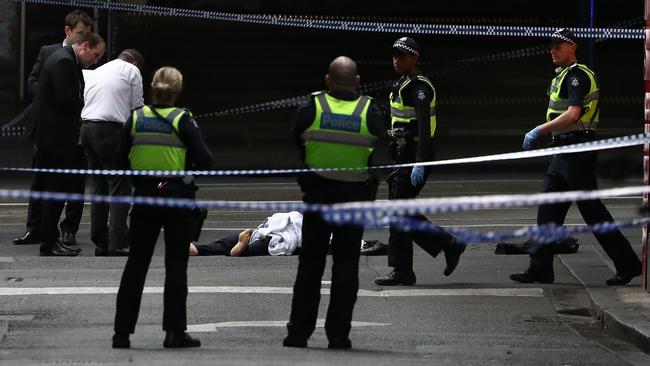
It began at 4.10pm. Melbourne was in the grips of the spring racing carnival and the first blush of the holiday season. Myer was due to unveil its Christmas windows in a few hours. Instead, death returned to Bourke Street.
The extraordinary scenes were broadcast all but live on social media, as images of the flaming ute, the knife-wielding attacker and a police officer shooting at point-blank range were uploaded by shoppers and city workers.
The first we see is a slow-moving image of a dark-blue Holden Rodeo ute, its twin cab spewing flames and smoke, ghosting down the Bourke Street hill towards the pedestrian mall where Dimitri Gargasoulas allegedly began his homicidal rampage nearly two years ago. By the time the burning vehicle comes to a rest at the kerb, its driver’s door flung open, the worst has already happened. The driver has already killed.
A second man is stabbed in the neck. Covered in blood, he runs up the Bourke Street hill before he, too, collapses. He is rushed to hospital. So far, he has survived. A third person is also stabbed and taken to hospital.
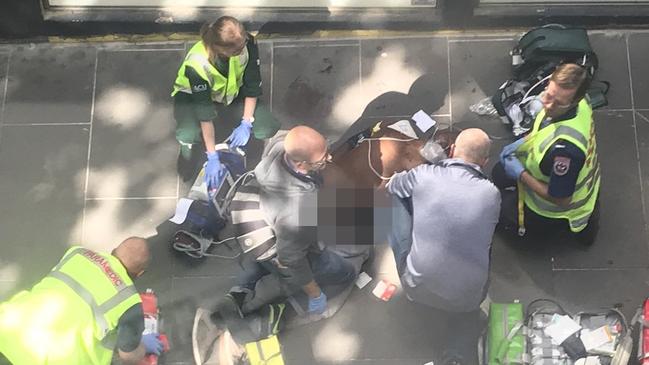
By the time police confront the attacker, Bourke Street is bedlam.
From multiple videos captured on mobile phones, we see the man lunging at officers with the knife. Trolley man trips over his own feet, sending the cart crashing to the ground, its wheels spinning. He gets up, uprights the trolley and sends it barrelling back into the fracas. Another man rushes towards the attacker, a chair brandished above his head.
The attacker is fixated on two officers who are trying to get him away from shoppers. He lunges at one three times, slashing downwards with the knife. The officer raises his arm to protect himself.
When the attacker turns to the second officer, he looks straight down the barrel of a semi-automatic Glock handgun.
The videos don’t capture what the policeman says but, whatever his instructions, the attacker is deaf to reason. He raises the knife again, the officer shoots him in the chest from less than a metre away.
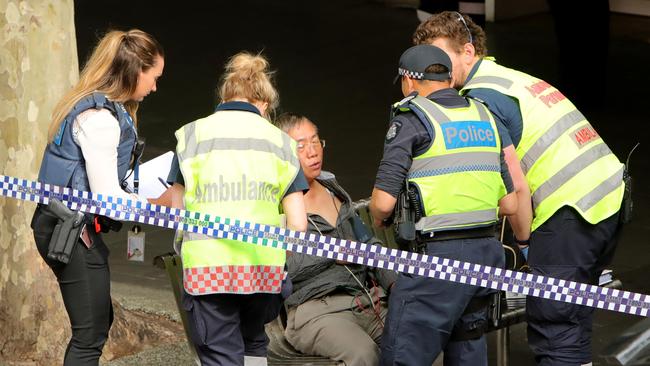
The crack of gunfire brings screams from shoppers. The impact of the bullet knocks the attacker off his feet. An unmarked police car arrives, and the attacker is disarmed and hogtied by two plainclothes officers. He is taken into custody but doesn’t survive.
Student Daniel Rachvuch captured the attacker’s confrontation with police on his mobile phone from about 20m away. Rachvuch was in Barcelona last year when Younes Abouyaaqoub, 22, drove a van down La Rambla, killing 13 people. He has now witnessed terror in Melbourne. “It makes me think that we need to put the right blockades in place where a lot of civilians walk because the way the world is moving, it’s scary to say the least,’’ he says.
“We need to do the best we can to defend good citizens.’’
On this day, good citizens are defending themselves. Bourke Street is already a fortress of vehicle-stopping bollards. Whatever weaknesses there were in the city’s defences in January 2017, when Bourke Street hosted its first deadly rampage, they have since been bolstered.
No amount of reinforced steel, no among of police, can keep a city completely safe. Sometimes, a city’s most important defence is people who never imagined they’d be on the frontline.
Additional reporting: Samantha Hutchinson

